Subsea Cables: The Backbone of India’s Digital Future
Subsea cables are the invisible infrastructure powering the global digital economy. Carrying over 95% of the world’s internet traffic and enabling trillions of dollars in daily transactions, these cables are essential for universal, meaningful connectivity. As India’s digital economy rapidly expands, ensuring robust subsea cable infrastructure is critical for maintaining secure, high-quality, and affordable internet access.
Recognizing this, the First-Ever International Subsea Cable Systems Conference was held in New Delhi on March 25, 2025, bringing together leading policymakers, industry experts, and key stakeholders to discuss the future of subsea connectivity in India. The Global Digital Inclusion Partnership (GDIP) was proud to partner with Broadband India Forum (BIF) for this landmark event, supporting crucial discussions on investment-friendly policies, regulatory challenges, infrastructure, and strategies to build resilience and redundancy in India’s subsea cable ecosystem.
Ms. Aruna Sundararajan, Chairperson of BIF, set the scene during the inaugural session by commending the efforts and attention on such an important subject. “Today we are living in an era marked by geopolitical upheavals and an unprecedented surge in data consumption… and it is in this context that the subject of subsea cable systems assumes paramount importance. Landing stations facilitate trillions of dollars worth of financial transactions daily, supporting sensitive government communications and transmit vast volumes of internet data.”
Beyond the vast economic possibilities, subsea cables present for the nation, Aruna shared how “India has the second largest number of phone numbers, largest population and one of the highest data consumption rates in the world. It is estimated that India should have 10 times the number of existing cable landing stations and four to fivefold capacity of subsea cables”. Ms Aruna then went on to discuss vital recommendations on leveraging India’s strategic location by establishing not only indigenous subsea cable repair facilities but also a requisite policy environment that will promote this strategic mission.
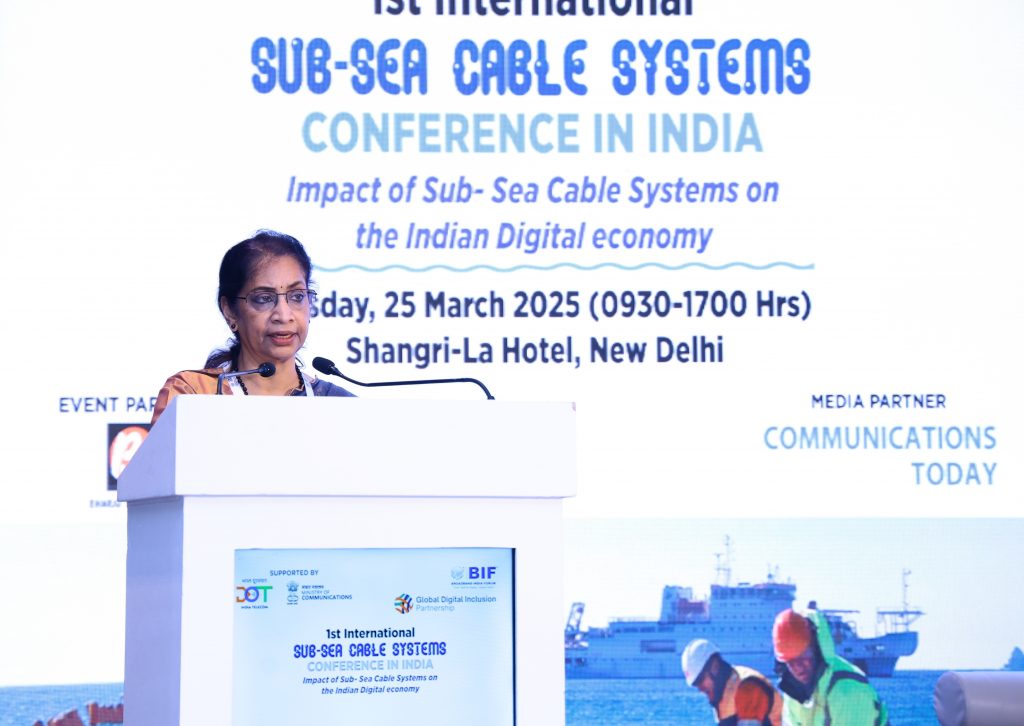
Echoing the sentiments and recommendations shared during Aruna’s opening address, Executive Director Sonia Jorge took to the stage and highlighted GDIP’s vital research on good practices for subsea cables policy. Beyond maintaining an open, competitive investment environment, key policy recommendations outlined and established during the research include regulatory certainty and ease, diversifying routes and landing points, implementing coordinated national policies, and streamlining cable repair regulations.
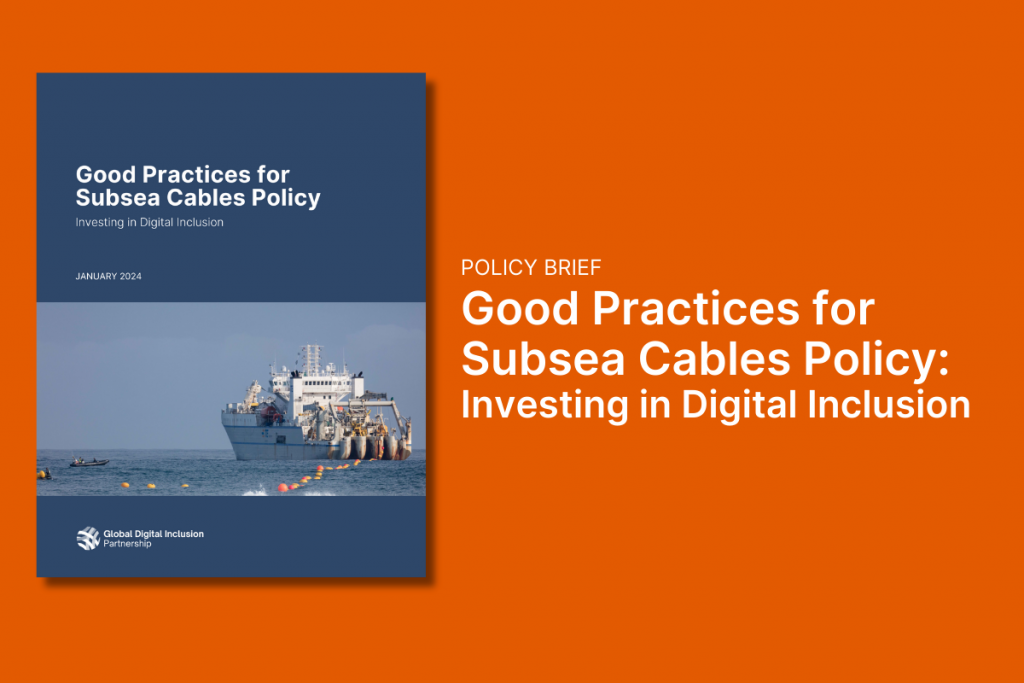
Subsea cables are the starting point to not only international connectivity but also the high capacity to support the kind of digital development that is envisioned for India. Although there has been much progress towards a stronger and more inclusive digital landscape across the region, much work is needed to realise this vibrant and ever-growing economy’s full potential.
During the inaugural session, Group CEO and managing director of Lightstorm, Mr Amajit Gupta, reflected on where India currently stands in its pursuit to becoming a leader and successful case study in subsea cable implementation and operation. He shared that 95% of global data currently sits on these cables, and India is responsible for roughly 20% of global internet traffic essentially consumed or generated out of the country. Yet there is an asymmetry whereby India hosts only 1-2% of the world’s subsea cable landing stations in contrast to smaller countries such as Singapore, which has 26 subsea cables across three landing sites. Despite India having 17 submarine cables currently landed, during his address, Gupta stated that 11 out of the 17 subsea cables are at their economic end of life and that is without factoring the age of these cables, which poses more challenges. Considering the 25% total GDP growth India aspires to generate from digital, concerted efforts, enabling policies and action are needed to drive this industry forward.
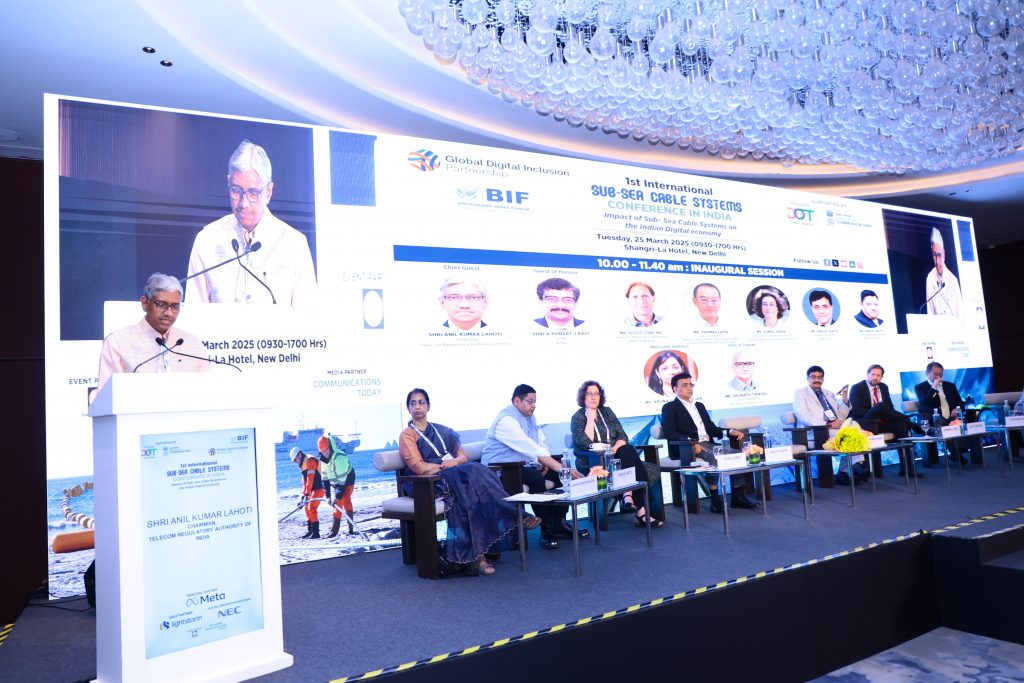
India’s Vision for a Stronger Subsea Cable Infrastructure
In his keynote address, Anil Kumar Lahoti, Chairman of TRAI, emphasized India’s exponential growth in data consumption and the need to strengthen subsea cable infrastructure to meet rising demand. He highlighted the importance of increasing Cable Landing Stations (CLS) and ensuring geographical diversity in cable routes to protect India’s strategic and commercial interests amid shifting geopolitical dynamics.
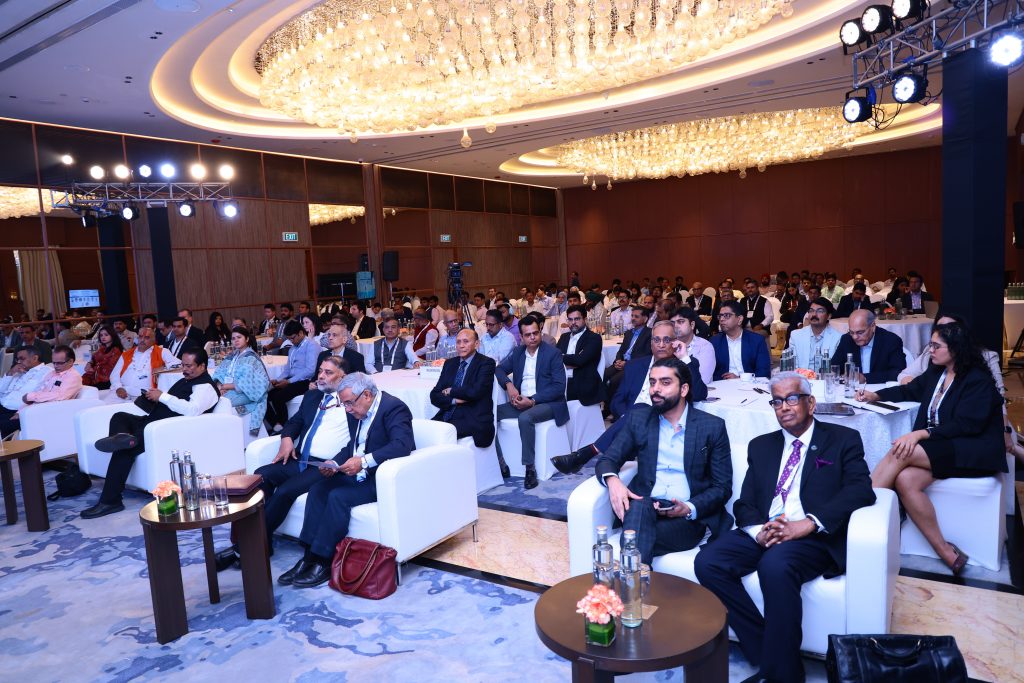
This potential was further reiterated by Scott Cowling, Director, Network Investments at Meta, who have invested in one of the largest terrestrial and subsea network projects. Underscoring the vast economic potential of subsea cables, Cowling shared how the social media giants’ investments in India have been calculated to contribute more than 36 trillion rupees (approx. USD 420 billion) to the APAC economy over a 5-year period between 2021-2025. These multimillion / billion-dollar cable systems are helping to provide greater diversity, reliability, and capacity to power India’s growing internet ecosystem.
Speakers in the “Frameworks for Success – Policy Enablers to Attract Subsea and Terrestrial Fiber Investments” panel, moderated by Sonia Jorge and chaired by Shri Rajesh Kumar Soni (Department of Telecommunications, Government of India), emphasized the urgent need for policy reforms to diversify subsea routes and enhance reliability, redundancy, and resilience. Shri Abdul Kayum (TRAI), Viswanathan Ramaswamy (Tata Communications), Suvesh Chattopadhyay (STT Telemedia), and Nina Cummins (Meta) highlighted that these reforms must be built on a transparent, harmonized approach, with public-private collaboration at its core to strengthen connectivity. With a rapidly expanding digital economy, a young and educated workforce, and a strategic geographic position, India is well-positioned to emerge as a global leader in the subsea cable sector.
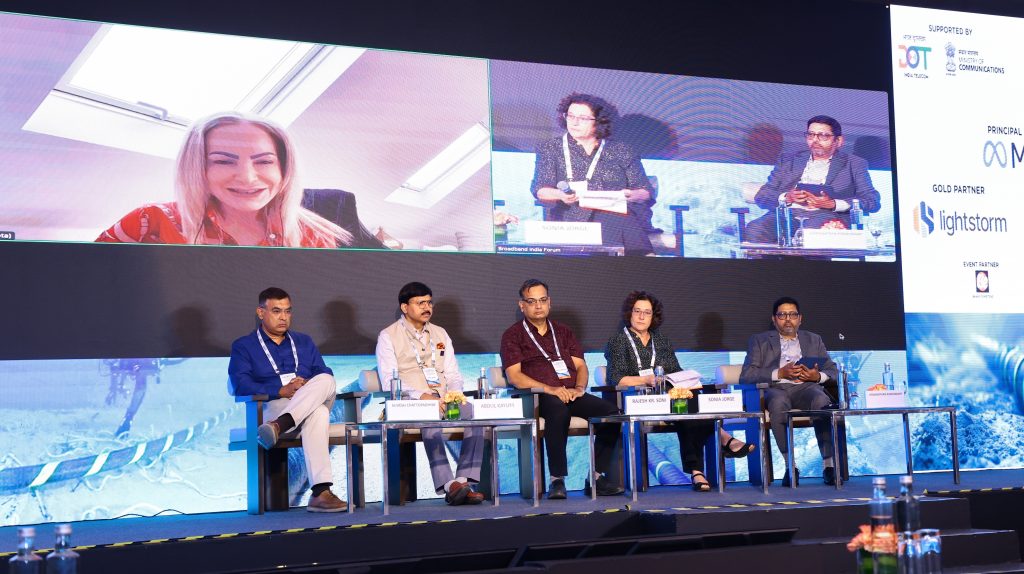
Key Takeaways
Policy and Regulatory Reforms: The conference explored how streamlining regulatory approvals and promoting a business-friendly investment environment could accelerate subsea cable expansion in India.
Resilience and Redundancy: With recent global subsea cable disruptions raising concerns, experts stressed the need for local repair facilities—including an India-flagged repair vessel—to minimize downtime and improve response times.
Investment in CLS Development and Fiber Growth: Ensuring robust Cable Landing Stations (CLS) and expanding domestic fiber networks were identified as essential steps for strengthening India’s connectivity.
Strategic Collaboration: A multi-stakeholder approach involving policymakers, industry leaders, and civil society was emphasized as key to driving sustainable investments and fostering knowledge exchange.
GDIP’s Commitment to Inclusive Digital Growth
During the event, GDIP Executive Director Sonia Jorge reaffirmed the organization’s commitment to working with partners in India and globally to advance policies that remove barriers to subsea cable deployment, maintenance, and repair. “In today’s digital world, uninterrupted and secure internet connectivity is essential for sustained socio-economic opportunities for all. Subsea cables have a transformative impact in advancing affordable and universal meaningful connectivity, and we must address regulatory barriers to ensure equitable, high-quality digital access,” she said.
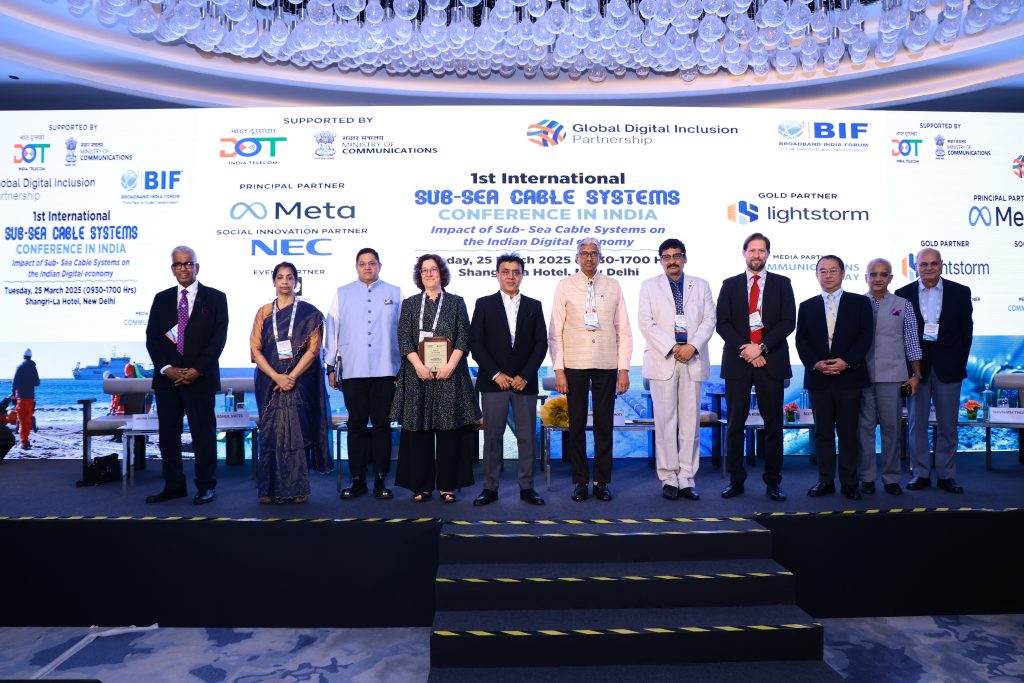
Looking Ahead: Shaping the Future of Subsea Connectivity
India’s growing role in the global subsea cable ecosystem presents immense opportunities for digital expansion, economic growth, and innovation. This conference served as a crucial platform to align stakeholders on strategies for strengthening India’s digital infrastructure, promoting investment, and ensuring a resilient and inclusive digital future.
GDIP looks forward to continuing to partner with BIF under the leadership of Mr. T.V. Ramachandran, President of BIF, and Brig. Anil Tandan, Director General, Broadband India Forum.
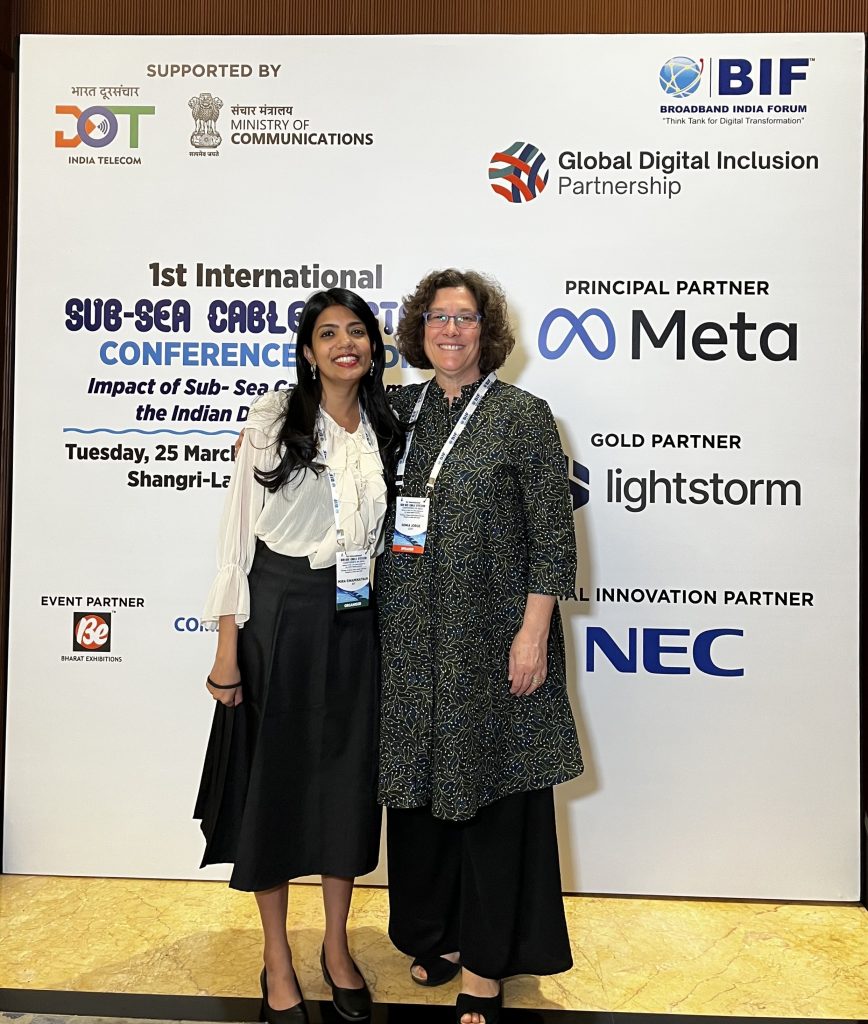
“India doesn’t stand alone; it stands in a region and a world that is becoming ever more connected so every action can be a reference and a model for many parts of the world and will inevitably contribute to a more globally connected world.” – Sonia Jorge
Missed the session? Catch up here: 🔗 Watch now
For media inquiries, please contact press@globaldigitalinclusion.org
About GDIP
The Global Digital Inclusion Partnership (GDIP) is a coalition of public, private, and civil society organizations working to bring internet connectivity to the global majority. GDIP aims to ensure that everyone is meaningfully connected by 2030, advancing digital opportunities to empower individuals and build inclusive digital societies.
About Broadband India Forum (BIF)
Broadband India Forum (BIF) is dedicated to advancing broadband infrastructure and digital connectivity in India. By engaging with policymakers, industry leaders, and stakeholders, BIF advocates for policies that drive investment and innovation in India’s digital economy.